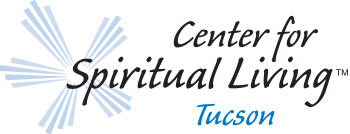The Hallways of Life by Rev Rhoni Tretsven
Hello beautiful souls, recently I have had the privilege of having many conversations concerning what I name as the “Hallways of Life.” You know the pesky place that feels like you are in the doldrums. Nothing appears to move in any direction for us to understand where we are going, what our next step is, and there isn’t any light for us to see ahead to our future. Where is that door or window to let us out and unleash our talents to the world? I have many times ended up in that hallway. Wondering, wishing, watching. It is when I let go of how things “should be”, and trust the Divine Self, all will be revealed as I am to know it.
conversations concerning what I name as the “Hallways of Life.” You know the pesky place that feels like you are in the doldrums. Nothing appears to move in any direction for us to understand where we are going, what our next step is, and there isn’t any light for us to see ahead to our future. Where is that door or window to let us out and unleash our talents to the world? I have many times ended up in that hallway. Wondering, wishing, watching. It is when I let go of how things “should be”, and trust the Divine Self, all will be revealed as I am to know it.
During one of my “stays” I, like most of us turn to books for inspiration or even a glimmer of how to escape the darkness of my mind. Yes, ministers are human too. As I scrolled through a few “Self Help” inspirational video’s, I happened upon a monologue given by Steve Harvey the host of Family Feud. It was about “Jumping” to your highest potential. I feel it is not just inspirational, but it gives us the gift of remembering who we are.
Steve Harvey did this impromptu monologue between tapings of the show. What I truly embrace is he encourages people to take a leap of faith and pursue their God-given talents and dreams, rather than staying in a safe but unfulfilling existence. He encourages us all to “Jump.” He explains, everyone has a gift: emphasizing that every individual is born with a unique gift or talent. This isn’t just about traditional artistic abilities; it could be anything from networking to cooking, teaching, or even landscaping. He further tells us, you have to jump to use your gift. To truly live and achieve success, you must take a chance and jump off the cliff of life. This means stepping out of your comfort zone and dedicating yourself to your gift. The parachute won’t open immediately. Harvey candidly warns that when you first jump, your parachute (success, support) will not open right away. You’ll likely face setbacks, failures, and hardships – you’ll hit the rocks and get some skin torn off.
Eventually, the parachute must open. This is the core message of hope. He assures listeners that if they persist and keep believing, their parachute will eventually open, as it’s a promise from God. He cites his own life experiences and God’s faithfulness as proof. Staying safe means never knowing your potential.
Harvey argues that if you choose to remain on the cliff, never taking that leap, your parachute will never open. You’ll never truly discover what God has in store for you or experience the abundant life you’re meant to have. Bills will always be there. He addresses common excuses like I have bills. He points out that bills exist whether you jump or not and living a life of just existing is not truly living.
As he continues, we suddenly understand this is a call to action, inspiring each one of us to overcome our fears, embrace our potential, and take the necessary risks/steps to live a life of purpose and fulfillment. I promise it will move you in many ways. I am grateful I can share some of my ah-ha moments along my journey of life with all of you, and the path I took to “see the light” and realize it is not an oncoming train.
He has written a book with the title, “Jump” if you choose to explore more.
–Namaste – Rev. Rhoni












